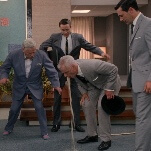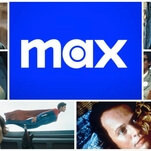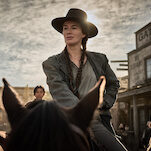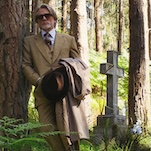When John F. Kennedy announced his attention to put a man on the moon, it went without saying that he meant an American man. Then as now, NASA’s attempt to expand the final frontier came with a fair amount of political baggage. Among many other things, the space race was another front in the Cold War, and even in its golden age, NASA had to answer the question of whether exploring space really yielded benefits in proportion to its enormous costs, particularly when Earth had its own share of problems in need of solving. Those relevant points tend to be overshadowed by one amazing fact: From 1969 to 1972, astronauts traveled to the moon and back, thanks to human ingenuity and daring.
In his 1989 film For All Mankind, journalist-turned-filmmaker Al Reinert focuses squarely on the wonder of that achievement. Raiding NASA’s film vaults, Reinert patched together the most amazing footage from each of the Apollo missions to the moon into one synthetic journey from Houston to a place where, until 40 years ago, no one had gone before. It’s breathtaking on two fronts: Reinert unearths stunning footage—far removed from the fuzzy copies used as B-roll in other documentaries—that captures the full scale of NASA’s accomplishment. But he keeps that footage grounded in the image and voices of the modest men and women who made it happen. A shot of Africa from space, dotted by the campfires of desert nomads, is soundtracked by an astronaut’s philosophical contemplation of what it means to look down on such a sight. A demonstration of the engineering might needed to put a rocket into orbit comes accompanied by footage of the brush-cut, pipe-clenching eggheads who made it happen.
Reinert’s approach shaves off any elements that don’t work as an adventure tale, but he gains a lot by excluding pesky facts and figures. Letting the voices of 13 astronauts provide the narration over an enveloping Brian Eno score, the film glides from one lyrical moment to the next. The lunar landscape rolls out in all its glory while an awestruck traveler recalls a dream in which he follows a set of lunar-rover tracks, only to encounter himself waiting at the end. In that single moment, the film captures the awesomeness and oddness of traveling farther from home than anyone had ever traveled before, stuck all the while in fragile human skin.
Key features: A making-of explains how the film came together. Eugene Cernan, the last man on the moon to date, joins Reinert for the commentary track.









































